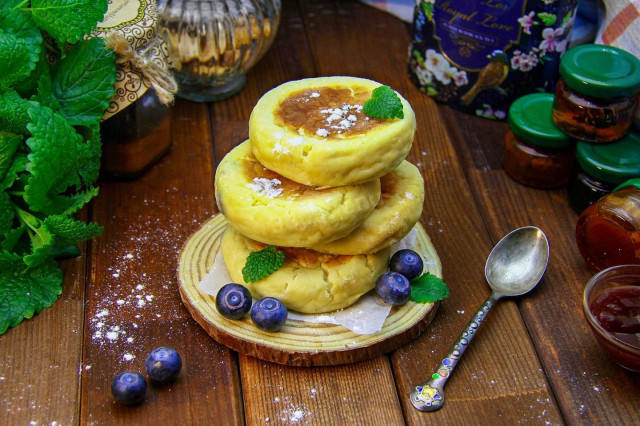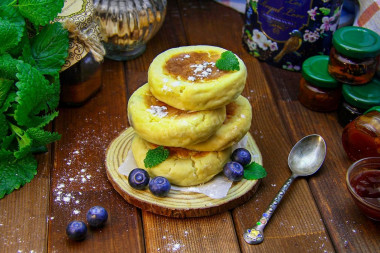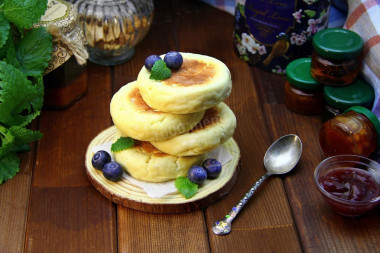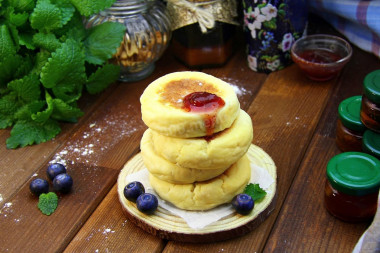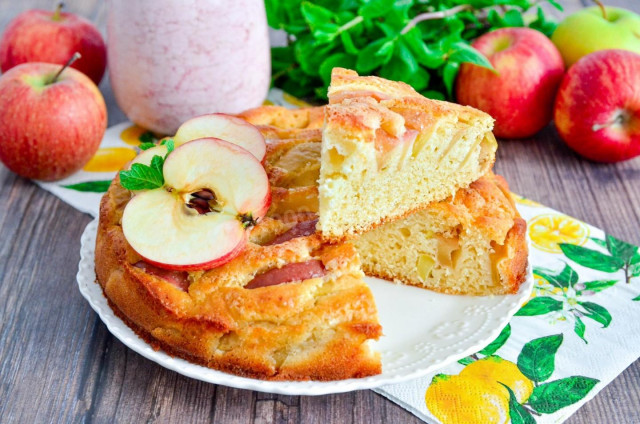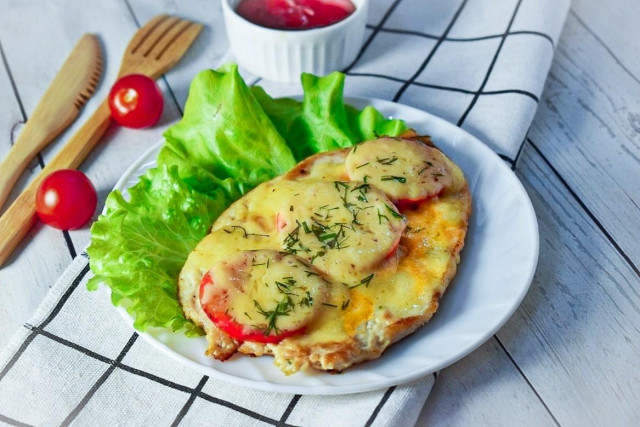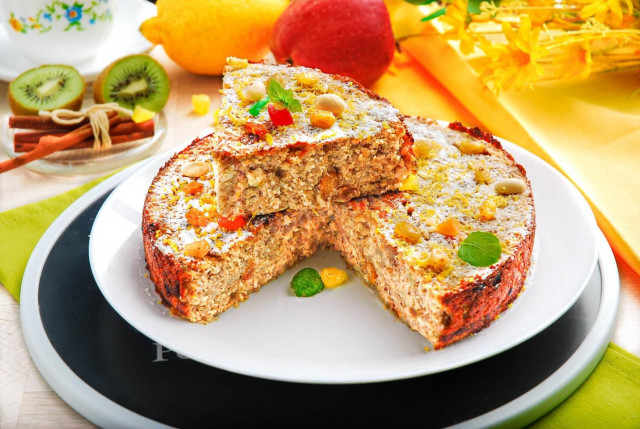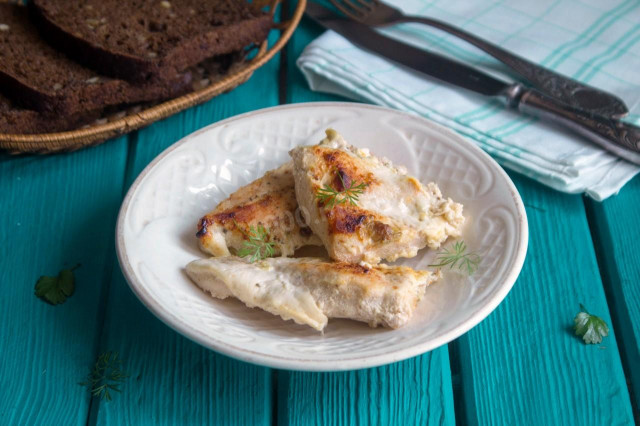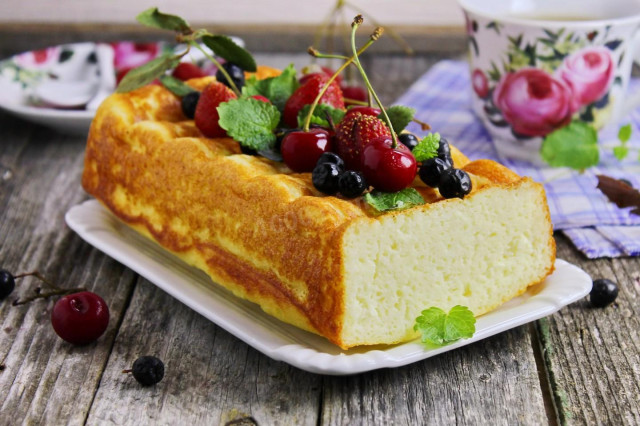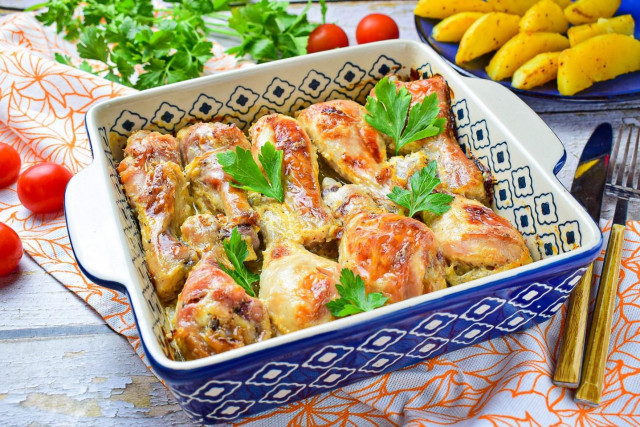Composition / ingredients
Step-by-step cooking
Step 1:
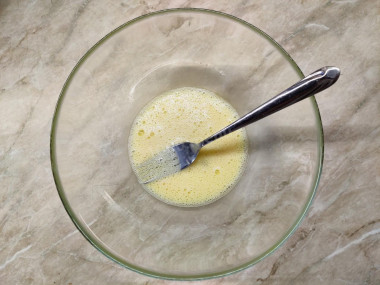
How to make air cheesecakes in the oven? Wash the eggs and put them in a bowl. Add a pinch of salt. Use a fork to lightly beat the eggs until light bubbles form.
Step 2:
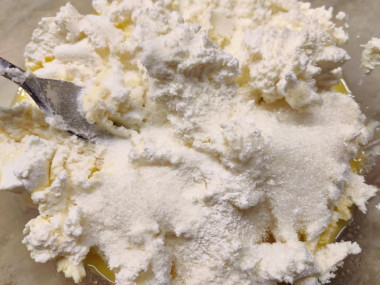
Cottage cheese is suitable for any fat content, cheesecakes from homemade fatty cottage cheese are the tastiest of all. Keep in mind only that such cheesecakes will be more high-calorie. Choose high-quality cottage cheese, without vegetable fats. Put the cottage cheese in a bowl and mash it with a fork. Add sugar, vanilla sugar and add baking powder. Mix the curd dough until smooth.
Step 3:

The next step is to sift two-thirds of the flour into a bowl. The remaining amount will remain for the final breading of cheesecakes.
Step 4:
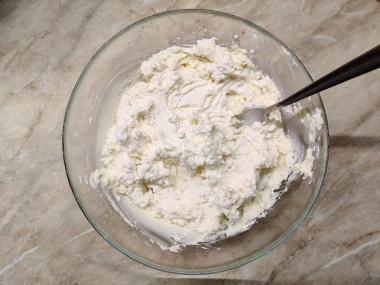
Mix all the ingredients thoroughly again.
Step 5:
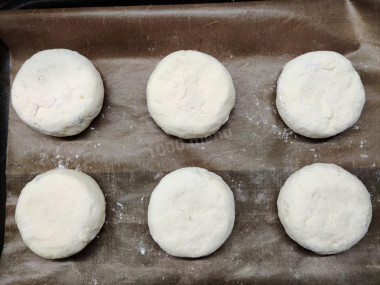
With wet hands, form small neat cheesecakes and roll them in flour from all sides. Place them on a baking sheet covered with a non-stick baking sheet. Bake the cheesecakes for forty minutes at 180 degrees until golden brown. Twenty minutes after the start of cooking, turn the cheesecakes to the other side. Ready-made cheesecakes are served to the table with sour cream, jam or condensed milk. Bon appetit!
It is better to spread these cheesecakes on a baking sheet at a distance from each other, since during cooking they rise well and increase in volume.
Due to the fact that according to this recipe there is very little flour in the cheesecakes, and semolina is not added at all, they turn out to be very airy like a dense souffle and even crack during baking.
Of course, after the cheesecakes are taken out of the oven, they will naturally fall off, and there is no escape from this. But their light, springy consistency will remain in its place.
Also, the advantage of cheesecakes that were not fried, namely baked, is that they perfectly tolerate freezing. You can double the volume of ingredients, for example, and freeze half of the cheesecakes that have already been heat-treated. Then, in advance, in the evening, I take out a portion of cheesecakes and leave them in the refrigerator overnight for defrosting. And in the morning I just warm it up in the microwave. That's it, five minutes spent, and a lazy breakfast is ready. I guarantee that no one will notice the difference between freshly cooked and frozen cheesecakes!
Be sure to wash the eggs before use, as even the seemingly clean shell may contain harmful bacteria. It is best to use food detergents and a brush.
What is the difference between vanilla, vanillin, vanilla extract and vanilla sugar, how to use and replace them correctly, so as not to spoil the taste of the dish , read in this article .
Keep in mind that everyone's ovens are different. The temperature and cooking time may differ from those specified in the recipe. To make any baked dish successful, use useful information about the features of ovens !
Caloric content of the products possible in the composition of the dish
- Chicken egg - 157 kcal/100g
- Egg white - 45 kcal/100g
- Egg powder - 542 kcal/100g
- Egg yolk - 352 kcal/100g
- Ostrich egg - 118 kcal/100g
- Cottage cheese of 40% fat content - 466 kcal/100g
- Cottage cheese of 20% fat content - 233 kcal/100g
- Cottage cheese of 18% fat content - 226 kcal/100g
- Cottage cheese of 10% fat content - 156 kcal/100g
- Low-fat cottage cheese - 75 kcal/100g
- Cottage cheese with sour cream - 260 kcal/100g
- Fruit cottage cheese - 147 kcal/100g
- Soft dietary cottage cheese - 170 kcal/100g
- Cottage cheese "vitalinia" - 64 kcal/100g
- Cottage cheese "morning" ( "danone") without sugar - 91 kcal/100g
- Cottage cheese - 156 kcal/100g
- Granulated sugar - 398 kcal/100g
- Sugar - 398 kcal/100g
- Salt - 0 kcal/100g
- Wheat flour - 325 kcal/100g
- Baking powder - 79 kcal/100g
- Vanilla sugar - 379 kcal/100g

